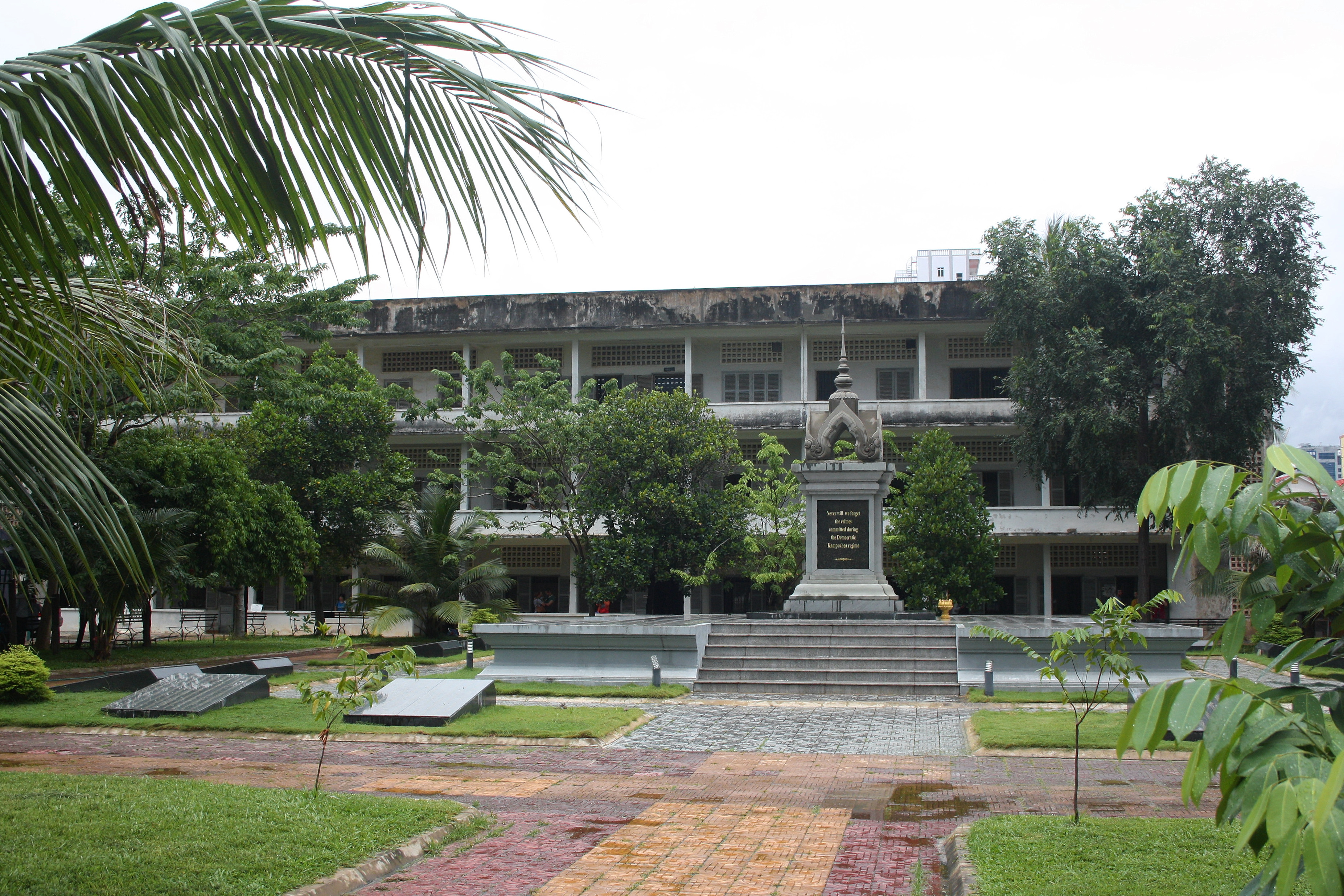





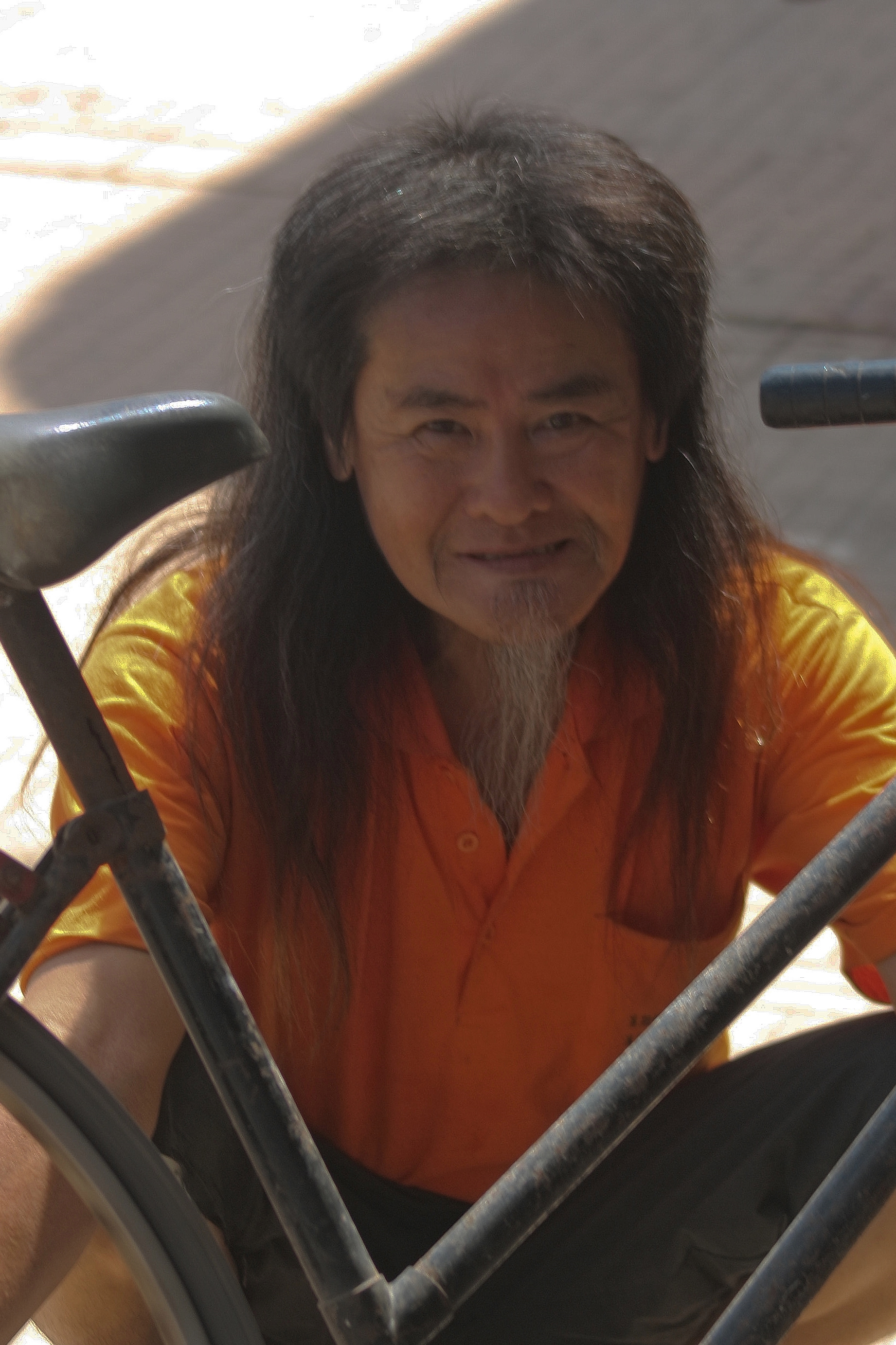
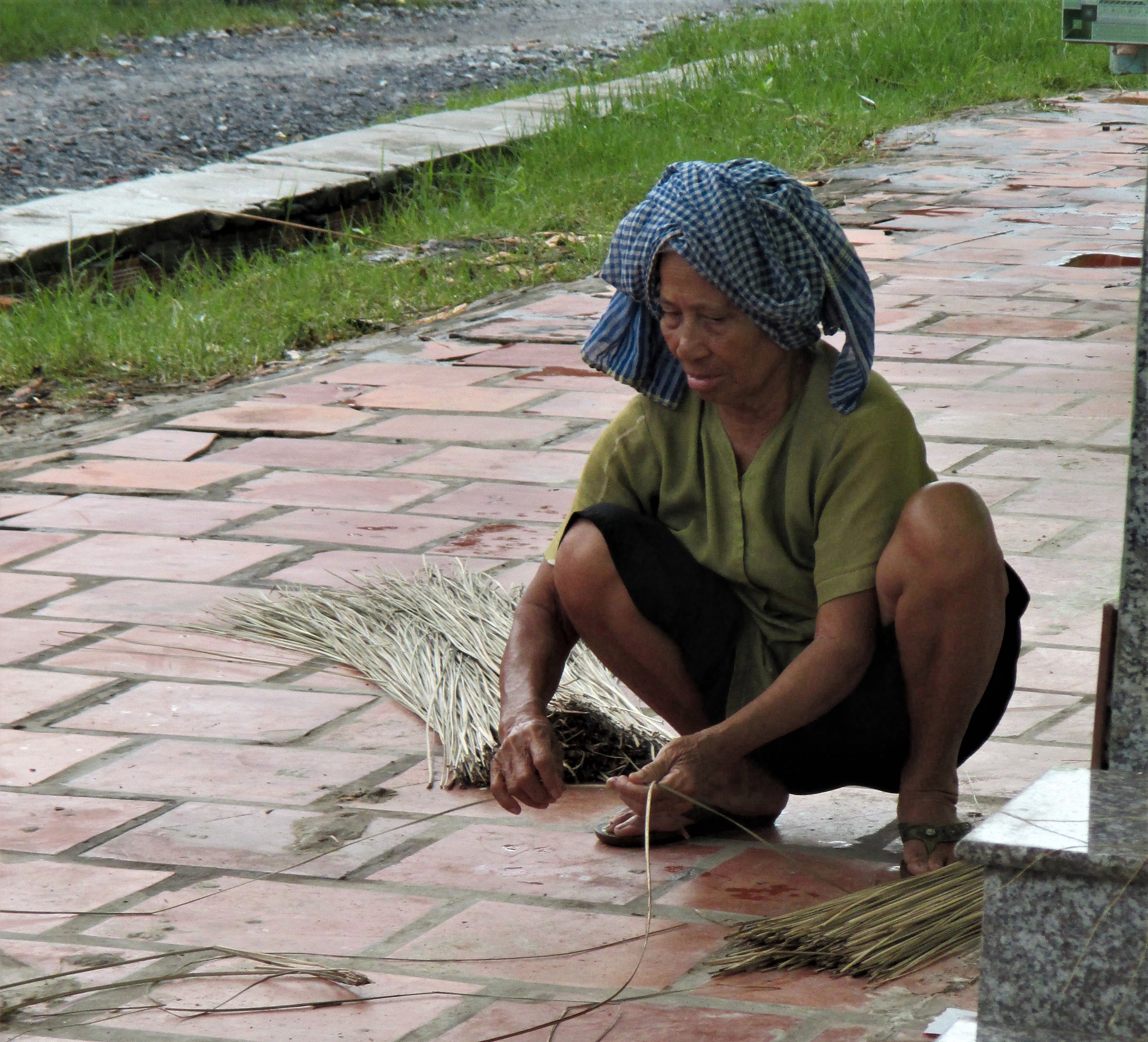
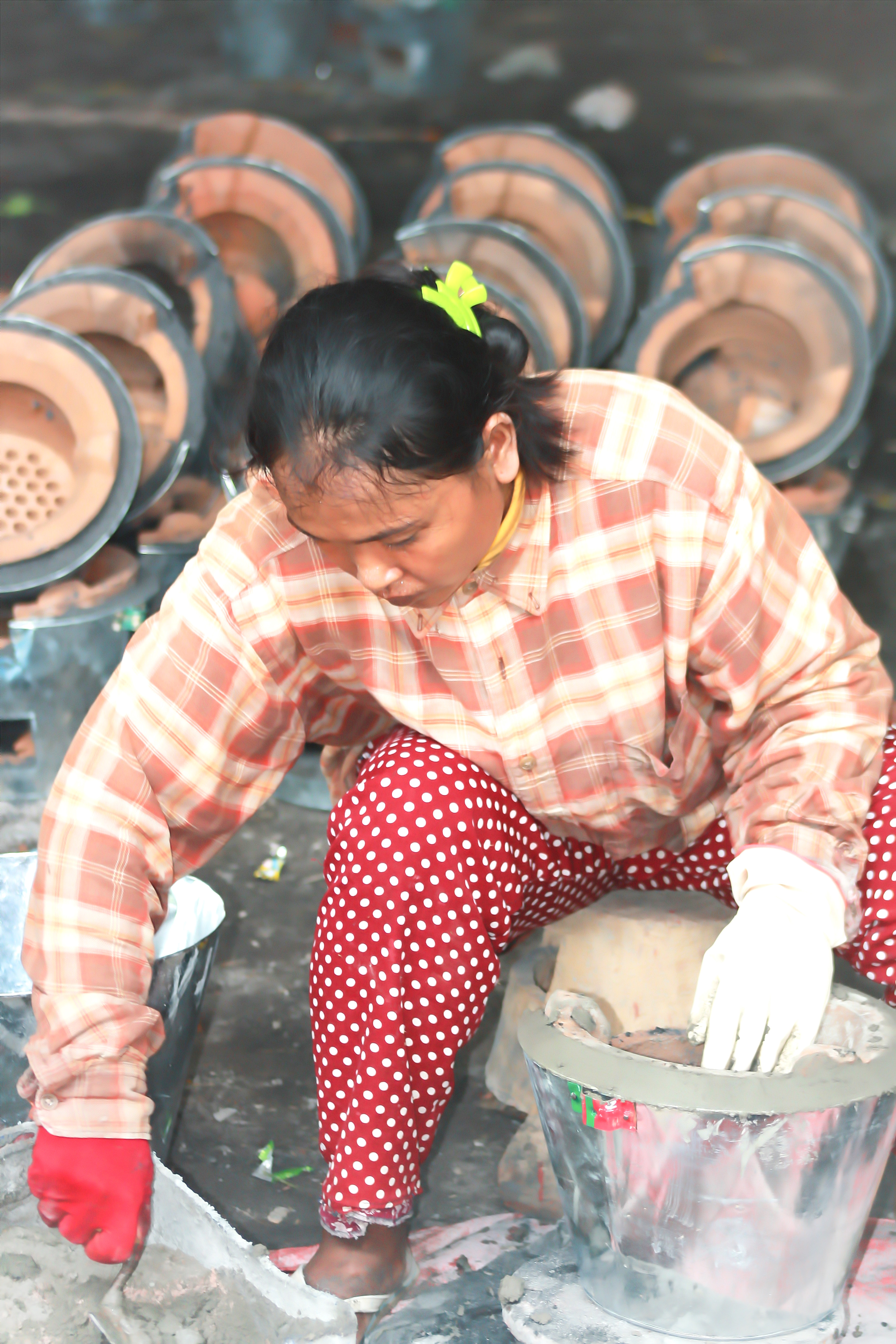

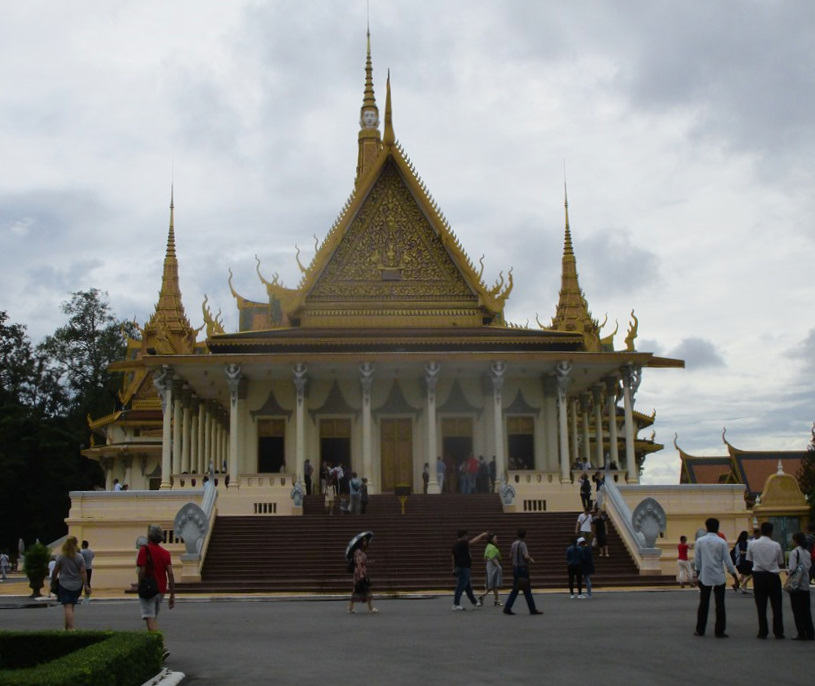
The Khmer Rouge forcibly evacuated almost the entire Phnom Penh population of 2-3 million in 1975 in forced death marches to the countryside. Their murderous regime is remembered at the notorious Tuol Sleng (S21) prison and torture centre, now the Tuol Sleng Genocide Museum and at Choeung Ek Killing Fields 15 kilometers away.
Given the sombre history of Phnom Penh i did not expect to hear the loud karaoke and party music coming from the brightly lit boulevarde along the low water front, neither still the nasally call to prayer from an unseen mosque in this predominately Buddhist country. What i was expecting was a dour, cheerless, half abandoned wreck. While there were still some obviously deserted colonial era buildings about they are few and are offset by the ostentatious Royal Palace, broad sweeping boulevardes, Khmer style monuments and temples and plenty of trees. Mixed in with the shambolic market and remaining signs of squalor are a few new, yet soul-less towers of 21st century rampaging capitalism.
Tuol Sleng Genocide Museum in the narrow back streets was the Khmer Rouge S21 torture centre and jail, with rolls of rusty barbed wire along the top of its permieter walls but otherwise looking much like it was originally built as - a high school. The benign looking grassy quadrangles and surrounding class room buildings used as cell blocks and interrogation rooms don't convey the horrors that were perpetrated here. It's the displays of large black & white photographs of prisoners, some known, most anonymous, that give this place its chilling atmosphere.
Choeung Ek is the best known of the Killing Fields. Khmer Rouge mass murder was a manual process, they lacked the mechanised infrastructure of the Nazis and used bashing and hacking as their preferred techniques. A thigh bone and clothing remnants protruded from one of the shallow mass graves, hundreds of amulets of murdered children hang from a tree and a commemorative Buddhist stupa houses 5,000 skulls disinterred from the graves while just outside in the car park daily commerce is conducted at stalls selling refreshments and souvenirs.









